Agree that with the onset of the cold season, you most want to wrap yourself in a cozy cardigan, a warm turtleneck or a soft sweater. There is no point in depriving yourself of such a pleasure, especially since the weather is unlikely to please us with unplanned temperatures for the next five months. Therefore, today we will devote an article to cashmere and tell you how to properly care for it, what you should pay attention to when buying and why this type of wool is so expensive.
Saving on cashmere is strictly prohibited. An expensive (in every sense) thing will serve faithfully for many years and will warm you when it is most needed. No wonder the legendary Coco Chanel said: “Life is too short not to wear cashmere.”
We invite you to prepare for the cold season together and face all the nuances. Here’s a complete guide to the most important ingredient of the autumn-winter season that all true fashionistas should be familiar with.
What is cashmere?
-
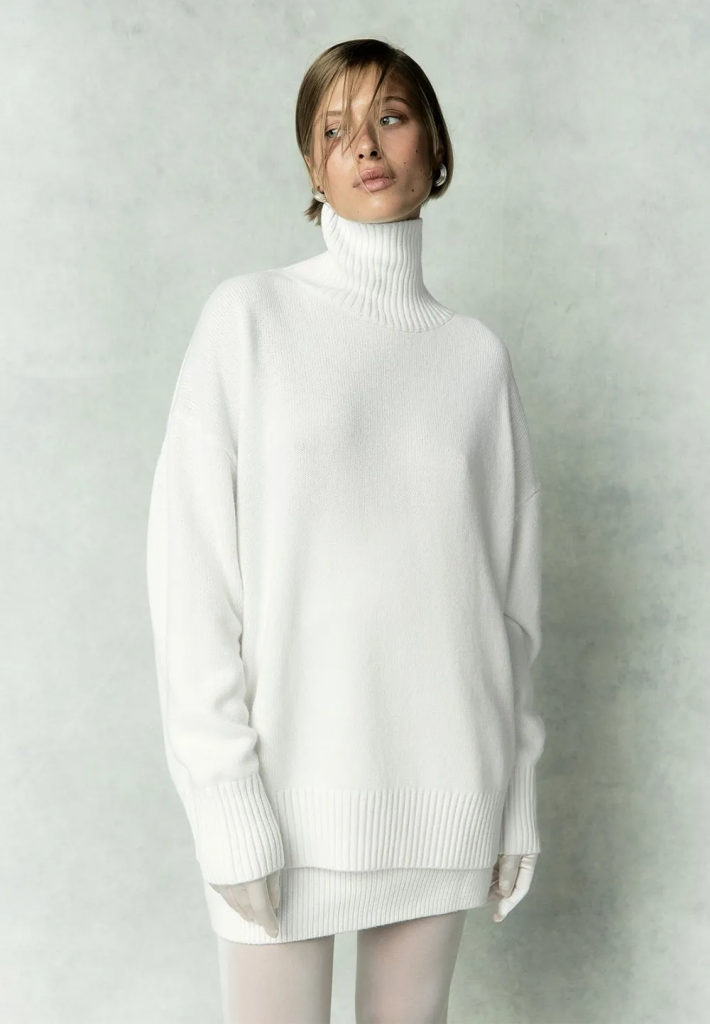
Kazakh Totti -
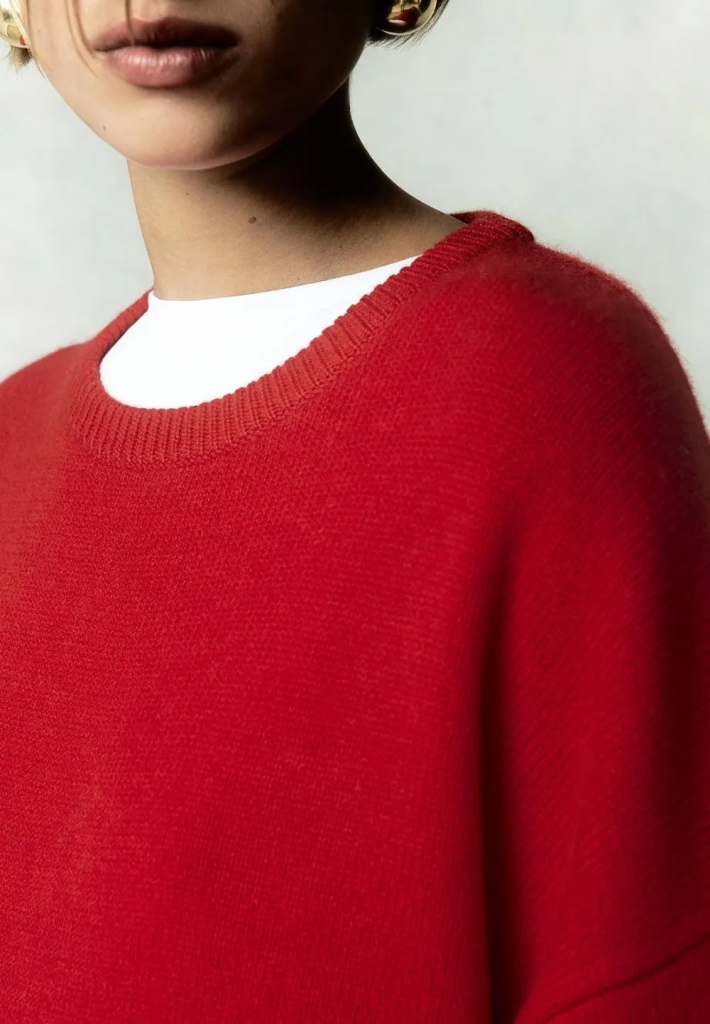
Jumper Totti
Cashmere is a fine woolen fabric obtained from the undercoat of goats living in the Himalayas. It is absolutely impossible to breed them in any other area. This is all due to harsh weather conditions – in summer the air temperature reaches 40 degrees, and in winter it drops to minus 50. In this way, goats create the undercoat from which valuable cashmere is made. By the way, its name comes from Kashmir, the historical region in the Himalayas.
Why is it so expensive?
-
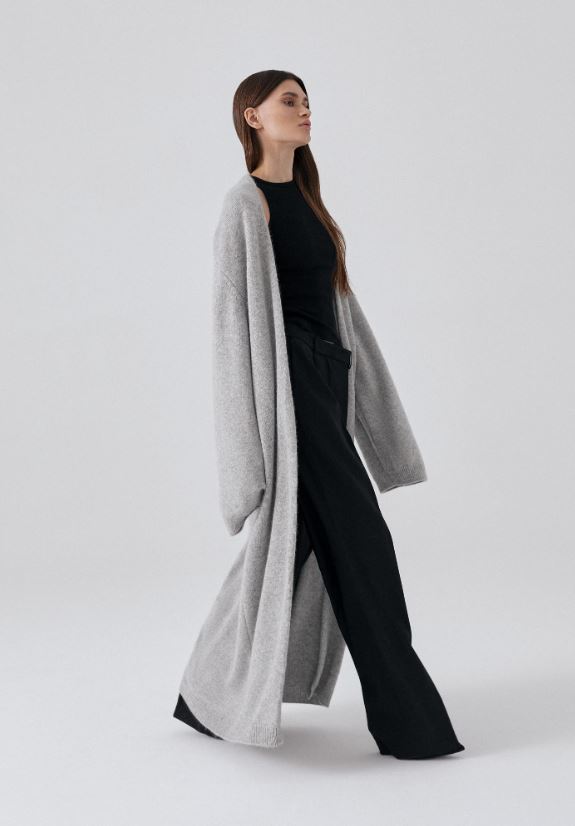
Cardigan Basilica -
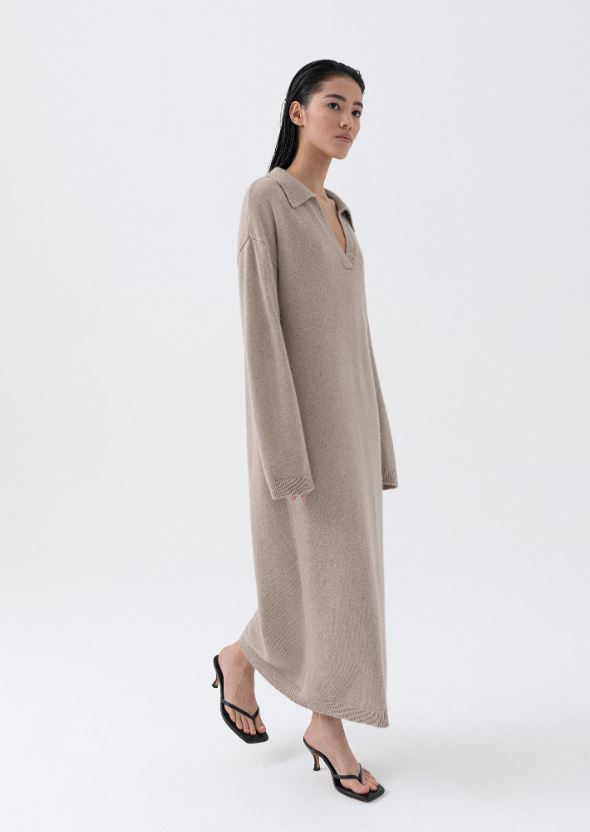
Dress
Did you know that this material is called “soft gold”? The wool type is really famous not only for its weightlessness, but also for its rather high price. Some people still believe that cashmere sweaters are an unaffordable luxury. And this is partly true. The fact is that the material is removed only from the goat’s undercoat and is combed by hand only once a year. Moreover, one animal brings about 200 grams of unprocessed feathers, but after processing half as much remains. So, it takes at least three goats’ lining to make a sweater. And now we remember that these animals live not all over the world, but only in the Himalayas.
Special properties of cashmere
The question of why real cashmere is expensive is solved. Now let’s move on to its special features and talk about the pros and cons of natural fabric.
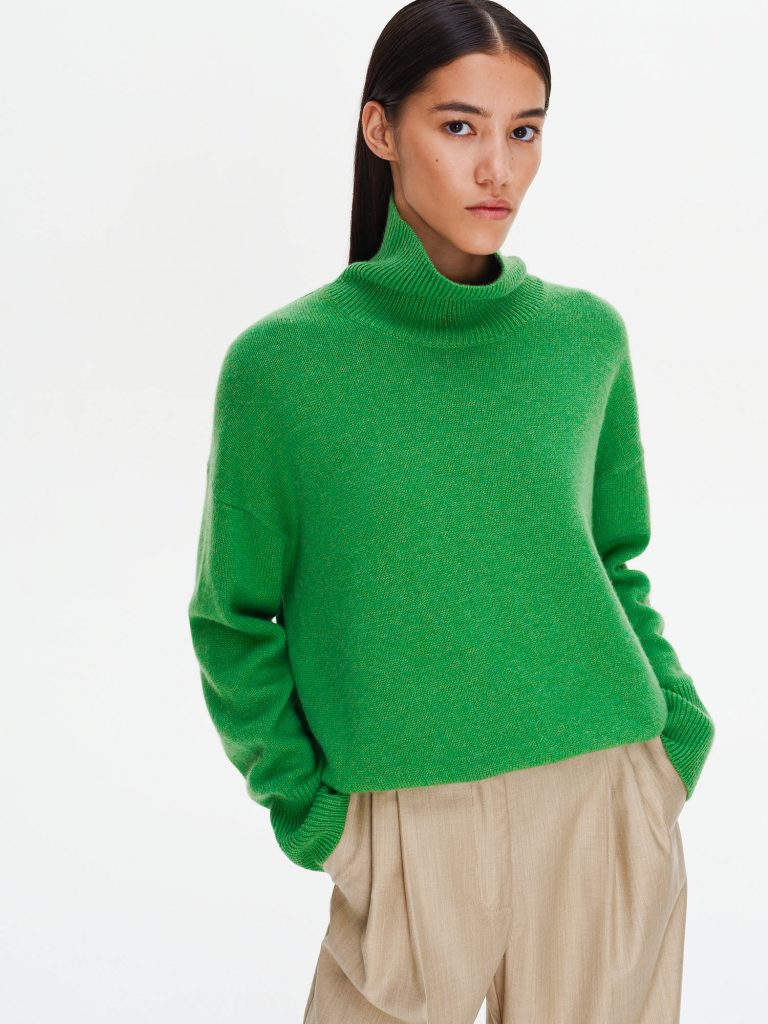
pros
First of all, you definitely won’t get cold in cashmere because it is eight times warmer than wool. Secondly, this fabric is thinner and lighter, so the element is practically not felt on the body. The third is considered hypoallergenic, does not cause itching and allows the skin to breathe. Therefore, even on a summer evening, cashmere will not be hot. This material is also famous for not harboring dust mites. So in the competition between cashmere and wool, cashmere definitely wins.

Cons
Fabric also has its disadvantages. For example, did you know that things made from this material cannot be worn every day? It turns out that after a trip the sweater should be allowed to “rest” for a few days (there must be a joke here that even clothes need rest). We have already mentioned the second disadvantage, and that is the high price.
cashmere types
baby cashmere
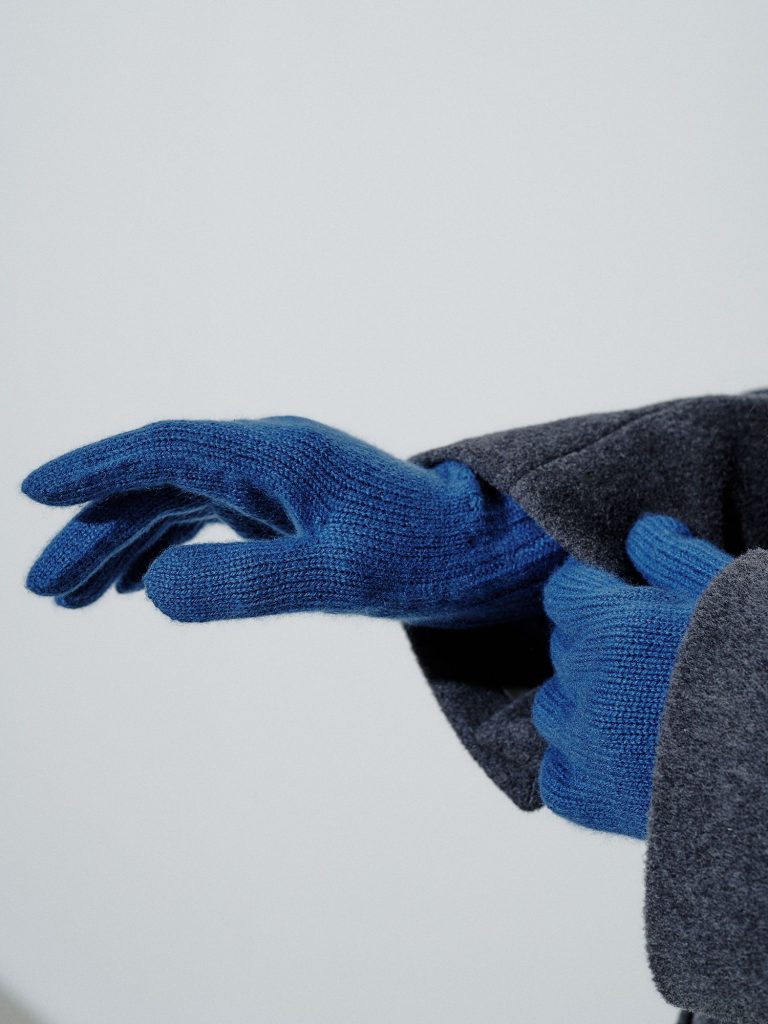
This species is considered the most valuable and expensive in the world. It is obtained from the undercoat of goat kids living in Northern Mongolia. Each year one animal brings about 30 grams of valuable material. By comparison, this amount is not even enough for a hat or gloves. This is why the price of baby cashmere products is so high.
pashmina
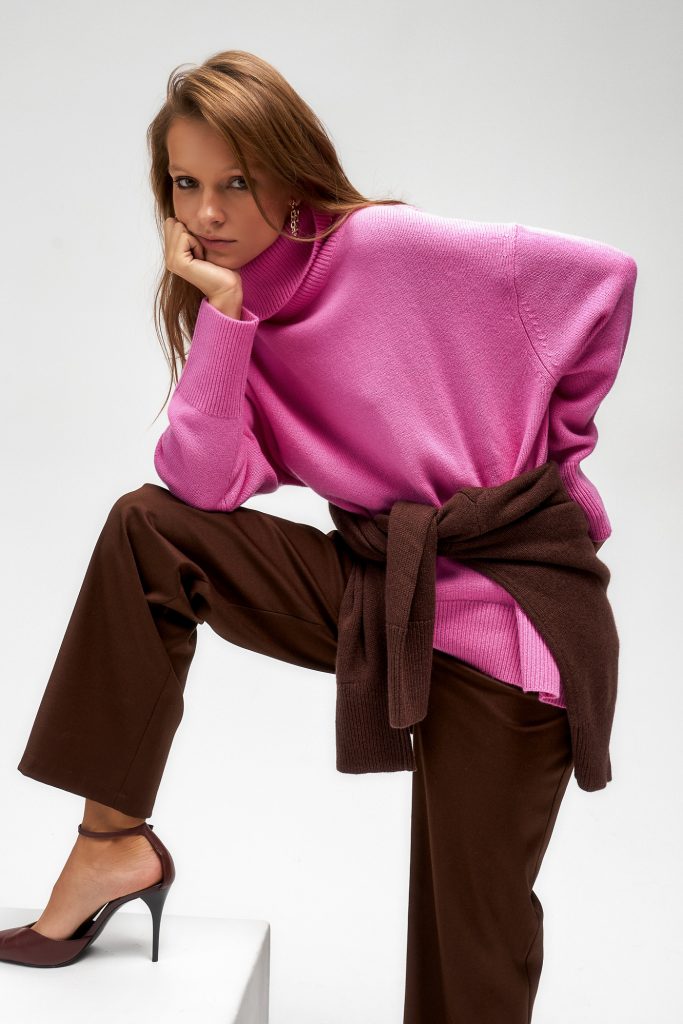
Pashmina is a higher quality cashmere. The fact is that to create this fabric, wool is combed only from the neck and belly of Mongolian goats. There it is particularly soft and thin. Most often, shawls and scarves are made from pashmina.
cashmere blend
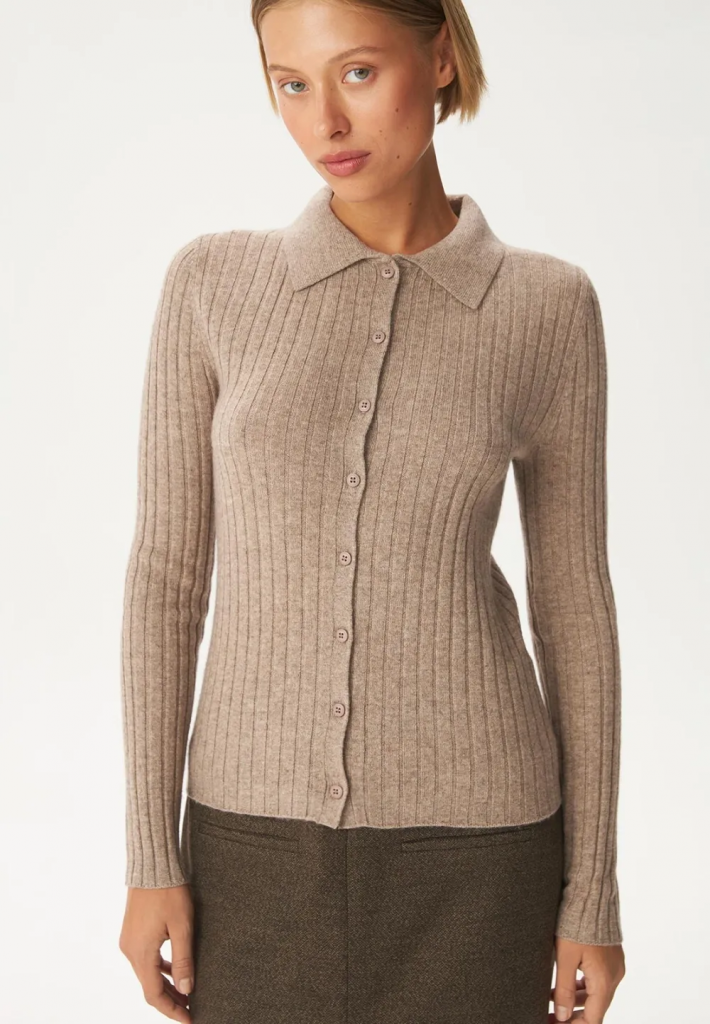
The mixed one differs from the usual one in that the fibers of yarns of different origin are woven. The most common combination of cashmere is silk, wool and cotton. Thanks to these additives, the fabric becomes more practical, durable and elastic. Products made from cashmere blends are noticeably cheaper.
eco cashmere

Eco-cashmere is an artificial analogue of natural cashmere; The fabric contains viscose and polyester. It may not be very different visually, but in reality it does not have the valuable properties of real cashmere.
How can I tell cashmere from fake?
Unfortunately, cashmere is often imitated, so you should approach the choice of sweater or sweater with special care. So that you know how to spot a fake, we decided to prepare a small checklist that you should check before buying.

See composition
The composition of the product must be indicated on the label; It is usually stated as a percentage. It is worth noting that it is normal to add silk fiber to a product. However, the amount should not exceed 10%. But the cashmere itself should be at least 90%. Another important point: If the product description does not indicate the fabric percentage, it is most likely a fake.
Pay attention to the price
Remember that cashmere cannot be cheap. Even if we talk about mixed cashmere, it will still cost more than wool. So if a sweater or sweater costs surprisingly little, that’s no reason to rejoice. On the contrary, you should be careful.
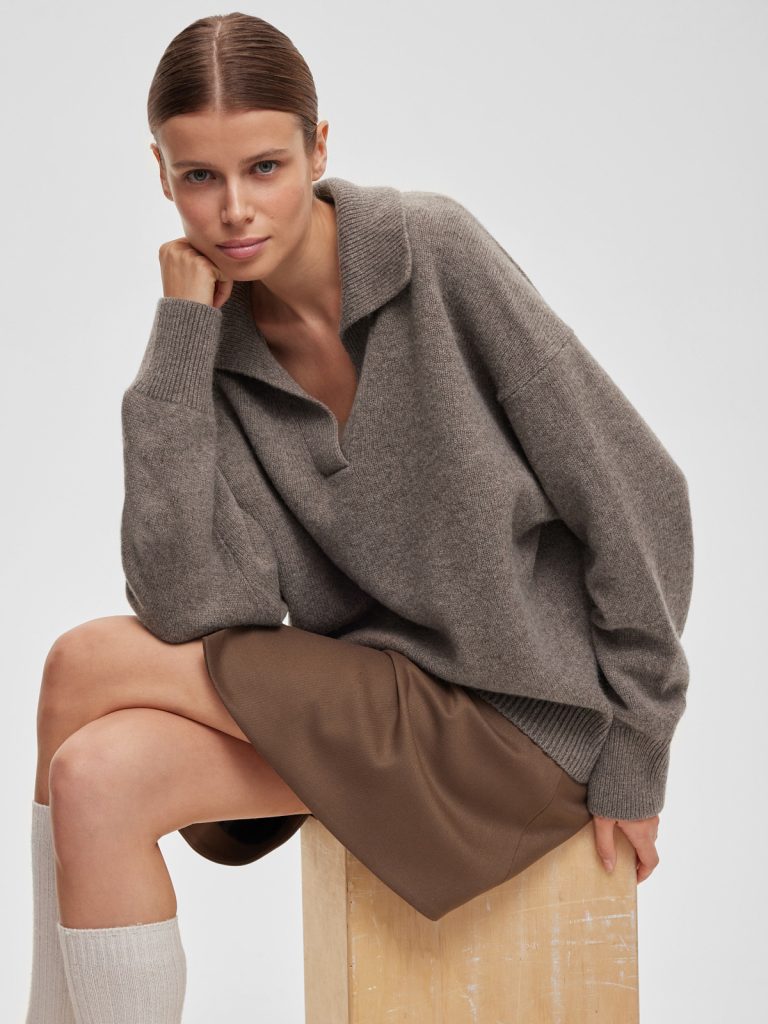
Weigh the product
No, you should not take a scale with you to the store. However, it is quite possible to evaluate the product yourself. The cashmere product should be very light, almost weightless.
Rate the view
100% cashmere never shines. Therefore, you should take the product to the brightest part of the store to check it. If the surface of the product is not matte, it means it contains additives.
Take a closer look at the weave
Cashmere yarn is very thin (and this is one of its main advantages), so the loops in the knitting are very small and the lines can be uneven. And that’s okay. But if you notice completely straight lines, you’re most likely looking at synthetics.
How to care for cashmere?
Cashmere care is a whole science. If you want something to last a long time, be prepared to take care of it. That’s why we’ve collected all the tips on how to wash cashmere, dry it, store it, and most importantly, how to wear it correctly.
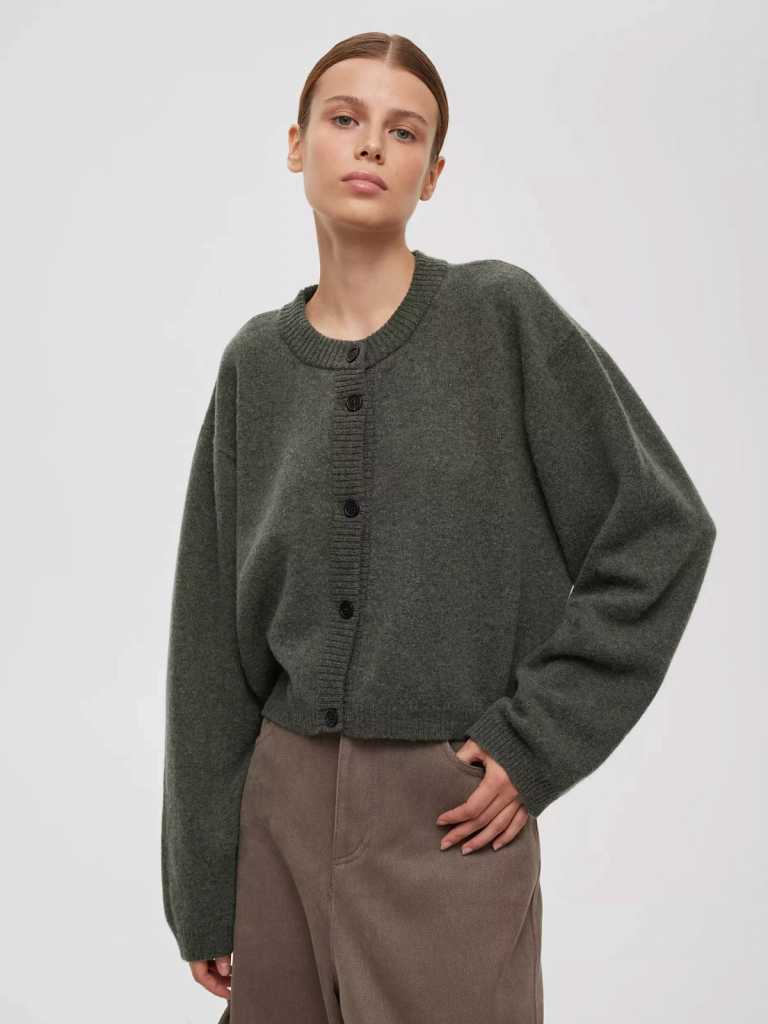
How to wash?
Machine wash in cold water on the wool/silk cycle. Do not spin more than 700 rpm. You should put your favorite sweater in a special mesh bag so that it is less damaged by the drum. For washing, use only special liquid detergents for woolen or delicate fabrics, on the contrary, it is better to avoid dry cleaning. The chemical treatment causes the delicate fibers to become thinner and coarser.
How to dry?
Cashmere products should be dried in a horizontal position.
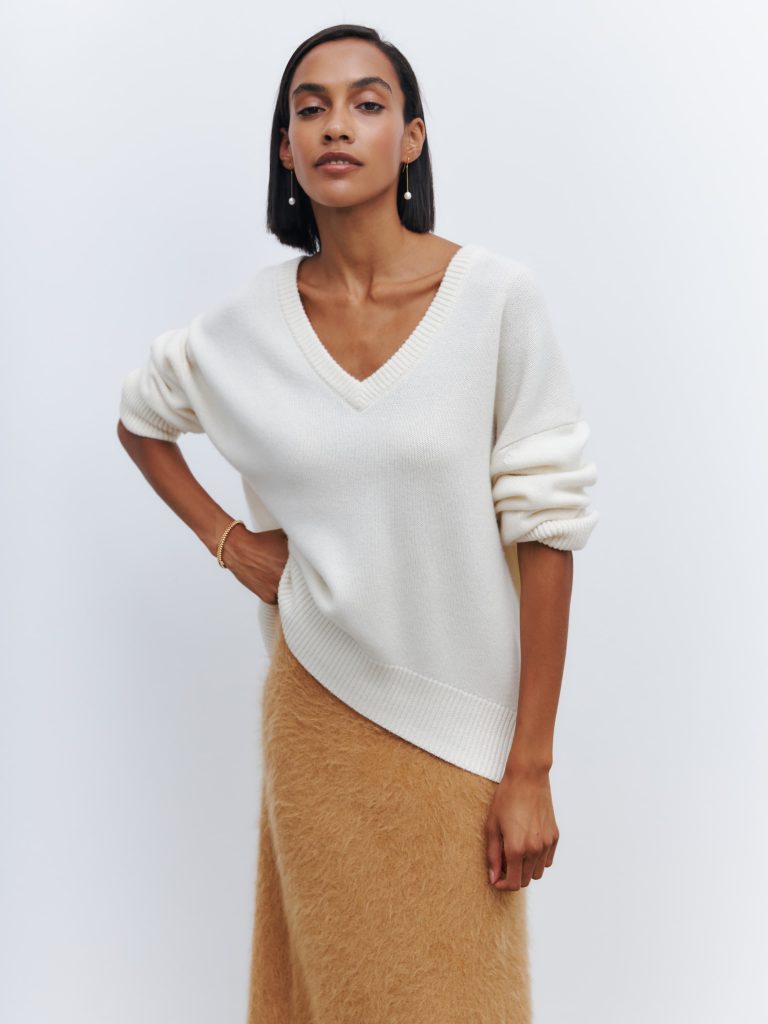
How to prevent peeling?
Pills in a sweater are a natural phenomenon because the yarn is spun from fluff. However, there are still a few rules that, if you follow them, you can avoid problems with pellets. First of all, a cashmere product cannot be worn and needs to be washed after four or five outings. Secondly, try not to wear rough-lined or unlined outerwear. Thirdly, remember that shoulder bags can also cause peeling on the product.
How to store?
Remember, storing cashmere sweaters on hangers is strictly prohibited. This may cause the product to become deformed. To prevent the item from losing its shape, it should be placed in the closet in a horizontal position and folded so that there are no wrinkles.
Source: People Talk
Elizabeth Cabrera is an author and journalist who writes for The Fashion Vibes. With a talent for staying up-to-date on the latest news and trends, Elizabeth is dedicated to delivering informative and engaging articles that keep readers informed on the latest developments.





